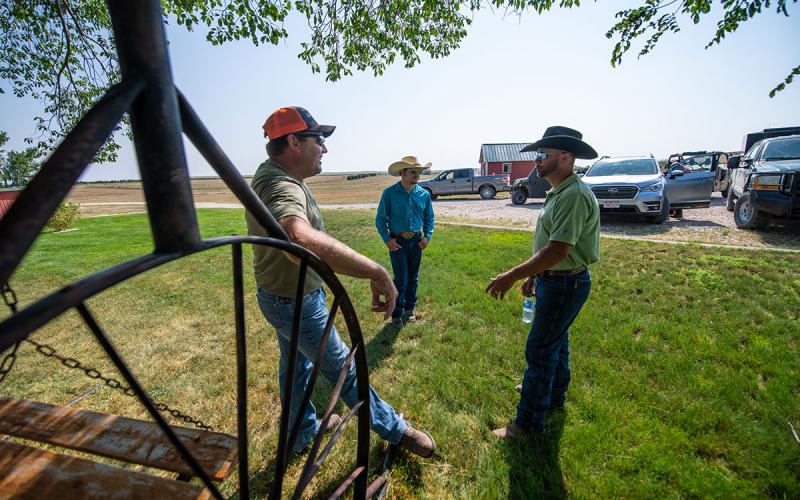
Written collaboratively by Hope Kleine, former SDSU Extension Health Education Field Specialist, and Alyssa Heyd.
Did you know arthritis is a leading cause of work disability in U.S. adults? In South Dakota, over 38% of adults aged 18–64 who have doctor-diagnosed arthritis experience work limitations (CDC). Those involved in agricultural production are all too familiar with the physical strain that can be put on the body during such work. The importance of maintaining physical ability is especially important to those who participate in regular physical labor. The term arthritis refers to inflammation and pain in the joints. The main symptoms of arthritis include pain and stiffness in the joints, as well as swelling and decreased range of motion.
Common Types of Arthritis
There are over 100 different types of arthritis, the most common being osteoarthritis and rheumatoid arthritis.
-
Osteoarthritis: This type of arthritis is characterized by the breakdown and degeneration of cartilage in the joint. As the cartilage wears away, bone begins to rub on bone causing pain and stiffness.
-
Rheumatoid Arthritis: Rheumatoid arthritis develops when an individual’s immune system attacks the lining of the joints causing inflammation. This inflammation leads to pain, tenderness, and decreased range of motion in the affected joints.
Reducing Risk and Taking Care
Behavior and lifestyle changes are one of the most important factors when aiming to reduce your risk of developing arthritis and in managing your current condition. Here are a few suggestions for managing arthritis:
- Use mechanical assistance for farming tasks.
- Avoid jarring movements. Gently step off equipment instead of jumping down.
- Alternate difficult jobs with easier ones. Such as replacing fence posts in the morning when you have the most strength and working on less physically demanding projects in the afternoon.
- Use proper technique and good form when lifting or carrying objects. Always bend from the knees and use your leg muscles to push yourself up to standing.
- Ensure that farming equipment, such as tractors, have supportive seating and cab space.
- Wear good quality, supportive footwear.
- When in the barn or shop, keep a chair, stool or bench nearby so you can rest from time to time.
- Use assistive devices when needed.
Taking steps to reduce your risk of developing arthritis are equally as important as properly managing an already existing condition. Here are a few suggestions for arthritis risk management:
- Stay active. Try to accumulate at least 30 minutes a day of aerobic activity and include 2-3x a week of strength training.
- Maintain a healthy weight.
- Protect your joints. Avoid high-impact activities and regularly practice strength and flexibility exercises.
- Avoid the use of nicotine products.
- Eat a balanced, healthy diet (proteins, vegetables, fruits, whole grains, healthy fats)
Available Resources
Did you know SDSU Extension offers physical activity programs specialized for those with arthritis? South Dakota has a cadre of Certified Walk With Ease instructors who offer these programs both virtually and in-person so you can find an option which best fits your lifestyle.
For additional information on arthritis and agriculture view this Arthritis and Agriculture publication courtesy of the Arthritis Foundation.

